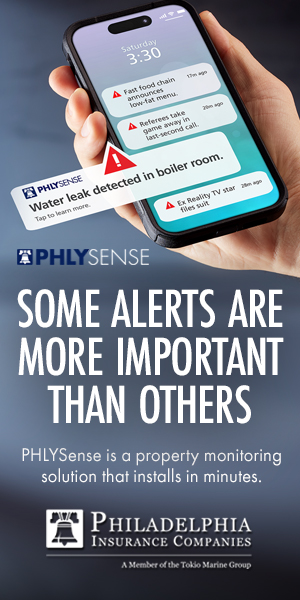 Did the policy’s water damage exclusion properly apply to the loss?
Did the policy’s water damage exclusion properly apply to the loss?
If the insurer truly meant to exclude coverage for any loss caused by water, regardless of the water’s origin, they have some work to do on their language.
By Bruce D. Hicks, CPCU, CLU
The Court Decisions column is a popular part of Rough Notes magazine. One reason for this is that the court room is where the promises made in an insurance contract often become real. All insurance professionals can develop “what if” scenarios, but until those scenarios are tested with an actual loss and a court decision, they remain mental exercises. This column comes from the industry expert editors of Policy Forms & Manual Analysis (PF&M). This is a knowledge base consisting of nearly 16,000 pages of coverage explanations from The Rough Notes Company’s digital solutions. The editors will dig a little deeper into one of this month’s court decisions to identify a coverage problem, provide possible solutions and/or offer broader perspectives.
“Water, water everywhere and not a thought to think!”
In the case CC 145 Main, LLC, v. Union Mutual Fire Insurance Company, an apartment building tenant, owning at least one feline, believed it was reasonable to dispose of cat litter down a toilet. The apartment building’s owner was insured under a BOP and it filed a claim. It sought to recover from damages caused by water that flowed out of the apartment’s shower and toilet drains when the litter clogged an internal pipe.
The claim led to a lawsuit, as the insurer and insured argued over whether a water damage exclusion properly applied to the loss. It was resolved, but only after the initial court agreed with the insured, and a higher court felt the insurer’s position was justified. The highest court recognized how both parties’ positions held merit.
We concur with the highest court’s analysis. Although it resulted in a ruling in favor of the apartment building owner, it made sense that the shower and toilet were viewed as part of the overall drainage system that was referenced by the policy’s water damage exclusion. It also made sense that the insured interpreted that, in context, the policy language was intended to bar coverage for damage caused by water from an off-premises source. Treating the exclusion as ambiguous appeared to be the proper course, since a plausible, alternate interpretation existed.
Perhaps more time can be spent by insurers on scrutinizing their policies’ overall coverage intent. In this instance, was the focus on the water exclusion reasonable? It seems as though the insurer kept arguing, for all intent, that its exclusion was absolute. In other words, regardless of the circumstances, no protection existed for damage created by water. However, the language and example found in the policy was supportive of an intent to avoid a coverage obligation for damage to a building and its contents from an exterior source.
Before a claims denial and, certainly before litigation, the insurer could have benefited by answering the question of coverage intent. It would have informed them on the applicability of the exclusion to the apartment building loss. If necessary, it would have also provided some post-claim guidance. If the insurer truly meant to exclude coverage for any loss caused by water, regardless of the water’s origin, they have some work to do on their language. Our guess is that scrutiny would have just resulted in reimbursement after recognizing that coverage was due.
The author
Bruce D. Hicks, CPCU, CLU, is senior vice president, Technical & Educational Products Division, at The Rough Notes Company. He has more than 40 years of property/casualty insurance experience. Active in the CPCU Society, Bruce served as a governor of the organization from 2007 through 2010 and most recently served on its International Interest Group Committee and as Chair of its Publications Committee.




